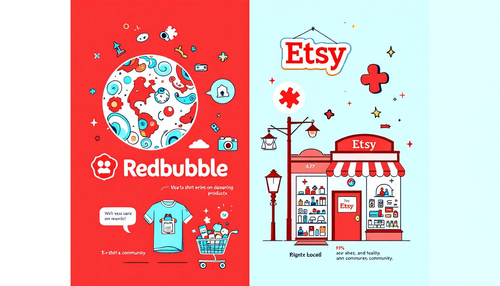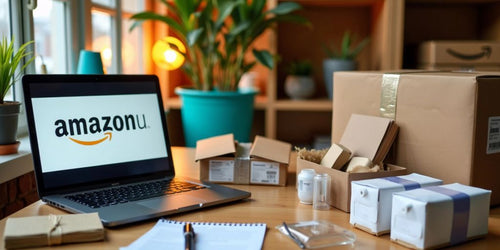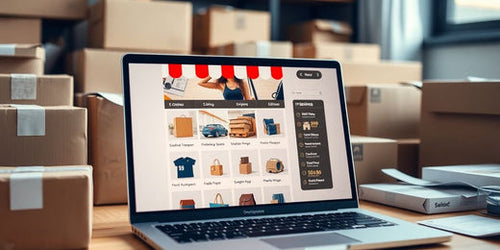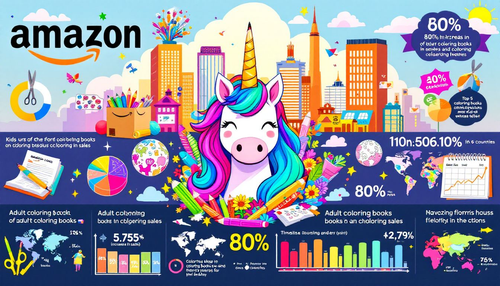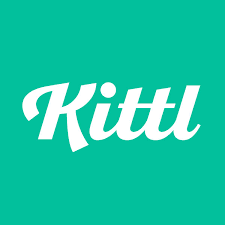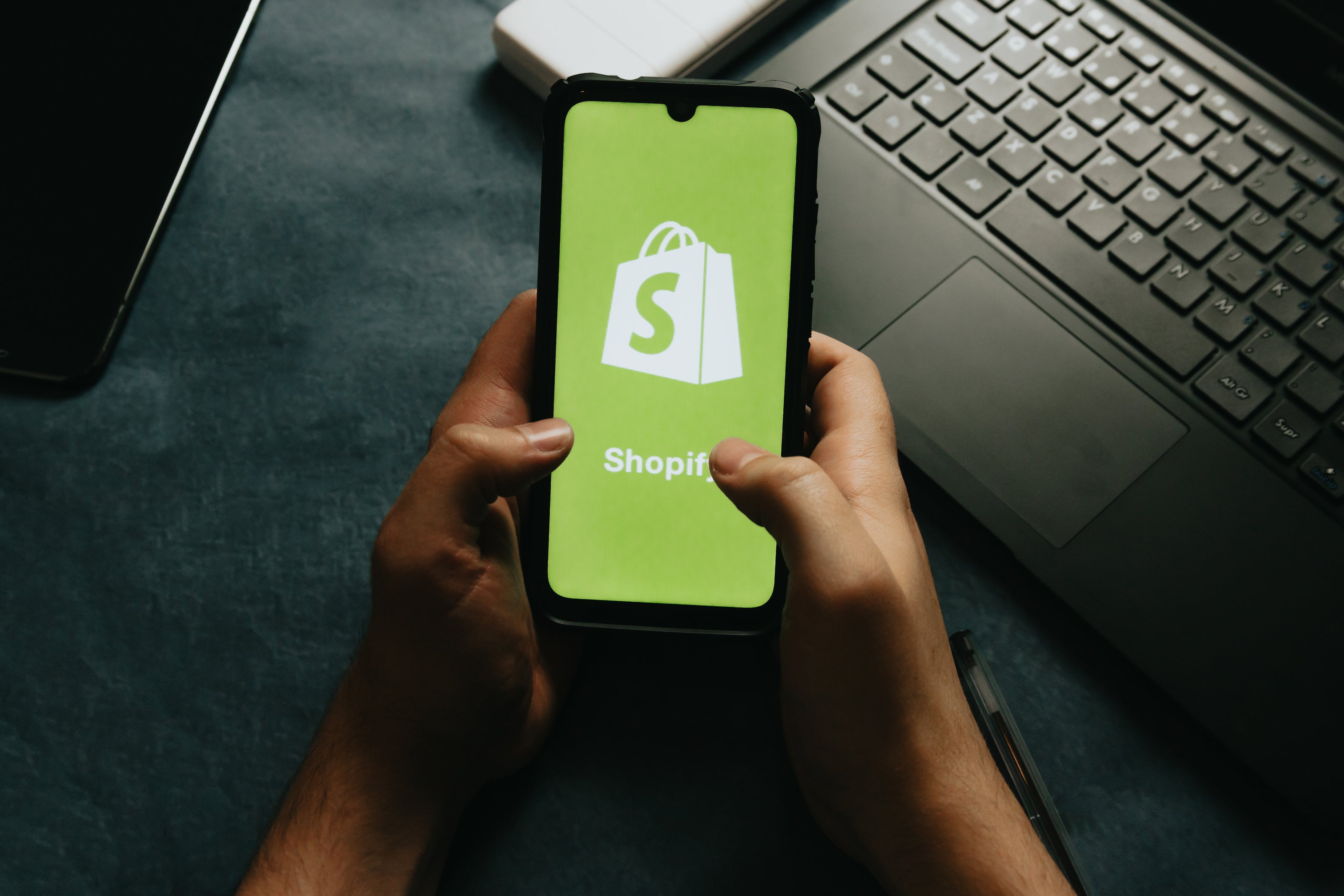
Amazon FBA: A Comprehensive Guide to Launching Your E-commerce Empire
Share
Unlocking the Power of Amazon FBA: A Step-by-Step Guide for Beginners
In the dynamic landscape of e-commerce, Amazon FBA (Fulfillment by Amazon) has emerged as a transformative force, empowering entrepreneurs and businesses to reach new heights of success. This comprehensive guide will provide a detailed and actionable roadmap to navigate the intricacies of Amazon FBA, guiding you through each stage of your journey from product selection to scaling your business. Whether you’re a seasoned entrepreneur or just starting your e-commerce journey, this guide will equip you with the knowledge and strategies to launch and grow a profitable Amazon FBA business. Additionally, there are various Amazon FBA courses available that offer essential guidance for aspiring Amazon sellers.
Step 1: Laying the Foundation: Product Research and Validation

The first step in any successful Amazon FBA venture is identifying a winning product that aligns with market demand, offers profitable margins, and resonates with your entrepreneurial vision. This crucial stage involves meticulous research and validation to ensure that your chosen product has the potential to thrive in the competitive Amazon marketplace. Additionally, a proper business setup is essential as a foundational step for success in the Amazon marketplace.
- Market Research: Unveiling Opportunities: Delve deep into existing market trends, identify thriving categories, and analyze the competitive landscape within those categories. Tools like Helium 10, Jungle Scout, and SellerApp provide invaluable insights into product popularity, pricing strategies, and potential sales volume. These tools empower you to make informed decisions based on data-driven analysis. Consider factors like seasonality, emerging trends, and customer preferences. For instance, if you’re interested in the home goods category, you might explore trending items like smart home devices, eco-friendly kitchenware, or minimalist furniture. By understanding current trends, you can position yourself to capitalize on emerging opportunities.
- Product Validation: Seeking Customer Feedback: Before investing significant resources, it’s essential to validate your product idea. Conduct surveys, gather feedback from potential customers, and test your product concept through platforms like Facebook groups or Amazon’s Early Reviewer Program. You can create a landing page or use social media to collect feedback on your product idea. By asking targeted questions and analyzing responses, you can gain valuable insights into customer needs, preferences, and potential pain points. This valuable feedback will refine your product offering and confirm its market viability. It’s essential to understand whether your target audience finds the product appealing, what price point they’re willing to pay, and if there are any potential improvements that could enhance its desirability.
- Profitability Analysis: Building a Sustainable Model: Once you’ve identified a promising product, a meticulous profitability analysis is crucial. Calculate potential margins, factoring in product sourcing costs, shipping expenses, Amazon fees, and marketing costs. Ensure that your pricing strategy allows for a healthy profit margin, enabling you to grow your business sustainably. Use a spreadsheet or dedicated software to track your expenses and calculate your potential profit margin. This will help you determine if the product is financially viable and whether it can generate a return on your investment.
Step 2: Sourcing and Inventory Management: Building a Robust Supply Chain and Shipping Logistics

inventory effectively. This step involves finding reputable suppliers who offer high-quality products at competitive prices and implementing a system to track and manage your inventory levels efficiently. Direct mentorship can provide valuable guidance in selecting suppliers and managing inventory effectively.
- Supplier Selection: Finding the Perfect Partners: Identify suppliers who align with your quality standards and provide consistent service. Consider factors like minimum order quantities (MOQ), lead times (time taken for delivery), and communication responsiveness. Building strong relationships with suppliers is crucial for a smooth and reliable supply chain. Research potential suppliers thoroughly, checking their reputation, customer reviews, and certifications. Consider contacting multiple suppliers to compare prices, quality, and lead times. Don’t hesitate to negotiate with suppliers to secure the best possible terms and ensure they can meet your production needs.
- Inventory Management: Striking the Balance: Determining the optimal inventory levels is a delicate balancing act. You need to have enough stock to meet demand without incurring excessive storage costs. Implement inventory tracking tools, forecasting software, and a system for regularly reviewing and adjusting your stock levels. This ensures that you can meet customer needs while minimizing waste and optimizing your investment. There are various inventory management tools available, both free and paid, that can help you track stock levels, monitor sales trends, and forecast future demand. By analyzing historical sales data and market trends, you can make informed decisions about how much inventory to order and when.
- Quality Control: Ensuring Customer Satisfaction: Establish rigorous quality control measures to ensure that the products you sell meet your standards and customer expectations. Conduct inspections, implement sampling procedures, and ensure that your suppliers share your commitment to delivering exceptional quality. This commitment to quality is crucial for building trust with customers and driving positive reviews. Consider setting up a clear process for inspecting incoming shipments and identifying any defects or discrepancies. You can also implement a system for collecting feedback from customers and addressing any quality concerns promptly. This proactive approach demonstrates your commitment to customer satisfaction and helps to build a strong reputation for your brand.
Step 3: Setting up Your Amazon FBA Business: Gaining Access to the Marketplace

Before you can start selling on Amazon FBA, you need to register as a seller. This involves creating an Amazon Seller Central account, providing necessary information about your business, and verifying your identity. This step grants you access to the vast Amazon marketplace, opening doors to millions of potential customers. The Seller Central platform serves as your hub for managing all aspects of your Amazon business, from listing products and fulfilling orders to marketing and analyzing sales data.
- Account Type: Choosing the Right Plan: Select either an Individual or Professional selling plan, depending on your sales volume and desired features. Opting for a professional seller account is advantageous if you plan to sell more than 40 items a month, as it offers advanced features like bulk uploads and brand registry, which are crucial for scaling your business. The Individual plan charges a per-item selling fee, while the Professional plan has a monthly subscription fee but offers lower per-item fees. Consider your projected sales volume and the features you need to determine which plan is most cost-effective for your business.
- Business Information: Providing Essential Details: Provide accurate and comprehensive information about your business, including your legal name, address, and banking information. Ensuring accuracy in this information is crucial for smooth transactions and efficient financial management. Amazon may require you to provide documents such as a business license or tax ID to verify your identity and ensure compliance with relevant regulations. Provide all necessary information promptly and accurately to avoid delays in account setup and approval.
- Verification: Ensuring Trust and Security: Amazon may require verification documents, such as your government-issued ID or business license, to ensure the legitimacy of your account and protect both sellers and buyers. This verification process safeguards the integrity of the marketplace and builds trust among participants. Be prepared to provide these documents as requested and ensure they are current and valid. This verification process helps to maintain the integrity of the Amazon marketplace by preventing fraudulent activities and ensuring that sellers are legitimate businesses.
Step 4: Crafting Compelling Listings: Attracting Customers and Driving Sales

Once your seller account is set up, you need to create compelling product listings that capture customer attention and drive sales. This involves optimizing your product titles, descriptions, images, and pricing to create a compelling and persuasive showcase for your products. Optimizing your product listings can save time and improve sales efficiency.
- Product Title: Using Keywords Strategically: Craft a concise yet informative product title that incorporates relevant keywords and accurately describes the product. Aim to include keywords that customers are likely to use when searching for similar products. This strategic keyword usage improves your product’s visibility in Amazon’s search results. Use tools like Amazon’s Keyword Planner or other third-party keyword research tools to identify high-volume, low-competition keywords that are relevant to your product category. Include the most important keywords at the beginning of your title, as Amazon’s algorithm gives more weight to words at the start.
- Product Description: Highlighting Features and Benefits: Provide a detailed and engaging product description that highlights key features, benefits, and usage instructions. Use clear and concise language to communicate the value proposition of your product and its potential advantages for customers. This detailed information empowers customers to make informed purchasing decisions. Include bullet points to highlight key features, use strong action verbs to describe benefits, and tell a compelling story about how your product solves a customer problem or fulfills a need.
- Images: Creating a Visual Feast: Utilize high-quality images that showcase your product from various angles and in different scenarios. Professional photography that highlights the product’s aesthetics and functionality is essential for creating a positive first impression and enticing potential buyers. High-quality images enhance the visual appeal of your listings and build trust among customers. Invest in professional product photography or hire a freelancer to capture stunning images that represent your product in its best light. Use a variety of images, including lifestyle shots that show the product being used in real-life scenarios. Ensure that all images are clear, well-lit, and in focus.
-
Pricing and Inventory: Setting the Right Course: Set competitive prices that attract customers while ensuring healthy profit margins. Conduct thorough research to understand the pricing strategies of competitors and offer a value proposition that resonates with your target audience. Regularly update inventory levels to avoid stockouts and ensure timely fulfillment. Use tools like Amazon’s pricing analyzer to monitor competitor prices and track your own pricing. Consider offering promotional discounts or bundle deals to attract customers and increase sales volume. Monitor your inventory levels closely and adjust them based on sales trends to avoid stockouts and ensure that you can meet customer demand.
Step 5: Leveraging the Power of Fulfillment by Amazon (FBA): Streamlining Your Operations
Amazon FBA is the cornerstone of this business model, offering a seamless and efficient way to handle the complexities of order fulfillment. By using FBA, you delegate storage, picking, packing, shipping, and customer service to Amazon, allowing you to focus on growing your business. Amazon FBA is a powerful tool that can significantly reduce your operational workload and provide you with greater scalability and flexibility. Experts like JT Franco, known for his comprehensive Amazon FBA courses and hands-on teaching style, emphasize the importance of leveraging FBA to succeed in the Amazon marketplace.
- Shipping Products to Amazon: Ensuring Smooth Logistics: Send your inventory to Amazon fulfillment centers, adhering to their strict guidelines and packaging requirements. Amazon provides clear instructions and resources to ensure that your products are prepared for efficient handling and storage within their facilities. Streamlining this process minimizes delays and maximizes the effectiveness of FBA. Familiarize yourself with Amazon’s FBA guidelines and packaging requirements to avoid any delays or issues during the shipping process. Use Amazon’s FBA Label Generator to create the necessary shipping labels and ensure that your products are properly packaged and labeled.
- Order Fulfillment: Delivering Excellence to Customers: Once your products are in Amazon’s fulfillment centers, they handle all aspects of order fulfillment, from receiving customer orders to delivering packages to their doorstep. This ensures fast and reliable delivery, enhancing the customer experience and building trust in your brand. Amazon’s network of fulfillment centers is strategically located across the globe, enabling efficient delivery to customers worldwide. They handle all aspects of order fulfillment, including picking, packing, shipping, and customer service, ensuring a smooth and seamless experience for your customers.
- Customer Service: Providing Exceptional Support: Amazon provides 24/7 customer service for all FBA orders, handling customer inquiries, returns, and any issues that may arise. This dedicated customer service team eliminates the need for you to manage customer support, allowing you to focus on other aspects of your business. Amazon’s customer service team is highly trained and equipped to handle a wide range of inquiries and issues. This frees up your time to focus on other aspects of your business, such as product development, marketing, or financial management.

Step 6: Shipping and Logistics: Ensuring Efficient Delivery
Shipping and logistics are the backbone of a successful Amazon FBA business. Efficient delivery not only enhances customer satisfaction but also boosts your business’s reputation. With Empire Academy, you gain insights into navigating the complexities of shipping logistics, ensuring your products reach customers swiftly and safely.
- Choosing the Right Shipping Method: Selecting the appropriate shipping method is crucial. Options include air freight, sea freight, and express couriers. Each method has its pros and cons, depending on factors like cost, speed, and the nature of your products. Empire Academy guides you in evaluating these options to find the best fit for your business needs.
- Setting Up Shipping Logistics: Establishing a robust shipping logistics system involves creating a detailed shipping plan and selecting a reliable freight forwarder. A well-structured plan ensures that your products are shipped efficiently, minimizing delays and reducing costs. Empire Academy provides step-by-step instructions on setting up your logistics, from packaging to labeling and documentation.
- Managing Inventory and Tracking: Effective inventory management is essential to avoid stockouts and overstocking. Utilize Amazon’s inventory management tools to keep track of your stock levels and forecast demand accurately. Empire Academy teaches you how to leverage these tools to maintain optimal inventory levels and ensure timely replenishment.
- Optimizing Shipping Costs: Shipping costs can significantly impact your profit margins. Learn how to negotiate with freight forwarders for better rates and take advantage of Amazon’s shipping discounts. Empire Academy offers strategies to reduce shipping expenses without compromising on delivery speed or quality.
By mastering these aspects of shipping and logistics, you can ensure efficient delivery, enhance customer satisfaction, and drive growth for your Amazon FBA business.
Step 7: Building a Brand: Creating a Unique Identity in the Marketplace

In the crowded Amazon marketplace, building a strong brand is essential to stand out from competitors and create a loyal customer base. A well-defined brand identity not only attracts customers but also fosters trust and recognition.
- Defining Your Brand: Start by crafting a clear mission statement that reflects your business values and goals. Identify your target audience by understanding their needs, preferences, and pain points. This foundational step ensures that your brand resonates with the right customers.
- Creating a Brand Identity: Your brand identity encompasses visual elements like logos, color schemes, and typography. Design a logo that is memorable and represents your brand’s essence. Develop a brand style guide to maintain consistency across all marketing materials and product packaging.
- Developing a Brand Voice: Your brand voice is how you communicate with your audience. It should be consistent and reflect your brand’s personality. Whether it’s friendly, professional, or quirky, ensure that your tone of voice aligns with your brand values and appeals to your target audience.
- Building a Brand Community: Engage with your customers through social media platforms like Facebook, Instagram, and TikTok. Create valuable content, run interactive campaigns, and respond to customer feedback. Building a community around your brand fosters loyalty and encourages word-of-mouth marketing.
By following these steps, you can create a unique brand identity that differentiates your Amazon FBA business and builds a loyal customer base, leading to increased sales and growth.
Step 8: Driving Traffic and Sales: Marketing Your Products Effectively with Amazon PPC
With your products listed and fulfilled by Amazon, it’s time to drive traffic to your listings and generate sales. This involves implementing a comprehensive marketing strategy that utilizes various channels to reach your target audience and promote your brand. A strong marketing strategy is crucial for attracting customers, building brand awareness, and generating sales for your Amazon FBA business. The Empire Academy 2.0 course offers superior content and support compared to other Amazon FBA courses, making it an excellent choice for those looking to excel in this area.
- Amazon A9 Algorithm: Optimizing for Visibility: The Amazon A9 algorithm governs product rankings in search results. Optimize your product titles, descriptions, images, and customer reviews to rank higher in relevant searches. This involves researching popular keywords, incorporating them strategically into your listings, and constantly monitoring and refining your product pages to enhance visibility. Use Amazon’s Keyword Planner, SellerApp, or Helium 10 to research keywords that are relevant to your product category and have high search volume. Include these keywords in your product titles, descriptions, and backend search terms.
- Amazon PPC (Pay-Per-Click) Advertising: Reaching a Wider Audience: Use sponsored product ads to increase visibility and drive traffic to your product listings. These targeted ads appear in Amazon’s search results and product pages, allowing you to reach customers who are actively searching for products similar to yours. This paid advertising strategy can significantly boost your sales, especially in competitive markets. Start with a small budget and experiment with different ad campaigns to find what works best for your products. Target your ads to specific keywords, demographics, and interests to reach the most relevant customers.
- Social Media Marketing: Building Brand Awareness: Utilize platforms like Facebook, Instagram, Pinterest, and TikTok to promote your products and build brand awareness. Create engaging content, run targeted ad campaigns, and leverage social media influencers to reach a wider audience. This multifaceted social media strategy can create a buzz around your brand and drive traffic to your Amazon listings. Use high-quality images and videos to showcase your products and tell your brand story. Run contests and giveaways to engage your audience and generate excitement around your products. Consider collaborating with influencers in your niche to promote your products to their followers.
- Email Marketing: Nurturing Customer Relationships: Collect customer emails through your Amazon store and nurture relationships through targeted email campaigns. Offer exclusive discounts, product updates, and valuable content to keep customers engaged and drive repeat purchases. This personalized communication strategy can enhance customer loyalty and increase revenue over time. Use an email marketing platform to create and send personalized emails to your customers. Segment your email list based on demographics, purchase history, or other relevant factors to target your messages effectively. Provide valuable content such as product reviews, tips, and tutorials to keep customers engaged and informed.

Step 9: Amazon Business Optimization: Enhancing Operational Efficiency
Optimizing your Amazon business is key to enhancing operational efficiency and maximizing profitability. Continuous improvement and strategic adjustments can lead to significant growth and long-term success.
- Analyzing Performance Metrics: Regularly monitor key performance metrics such as sales, profits, and customer satisfaction. Use tools like Amazon Seller Central to track these metrics and gain insights into your business performance. Understanding these metrics helps you make informed decisions and identify areas for improvement.
- Identifying Areas for Improvement: Look for opportunities to optimize your product listings, improve customer service, and streamline operations. Analyze customer feedback to identify common issues and address them promptly. Enhancing product descriptions, images, and pricing can also boost your conversion rates.
- Implementing Changes: Once you’ve identified areas for improvement, implement changes systematically. Update your product listings with optimized keywords, improve your shipping logistics, and enhance your customer service processes. Small, incremental changes can lead to significant improvements in overall efficiency.
- Monitoring and Adjusting: Continuously monitor the impact of your optimization efforts. Track performance metrics to see if the changes are yielding the desired results. Be prepared to make further adjustments as needed to ensure ongoing improvement and growth.
By focusing on business optimization, you can enhance operational efficiency, increase profitability, and achieve long-term success with your Amazon FBA business.
Step 10: Building a Sustainable Business: Financial Management and Growth

Effective financial management is crucial for the long-term sustainability and growth of your Amazon FBA business. This involves carefully tracking your sales, expenses, and profit margins, and implementing strategies for continuous improvement and expansion. By understanding your finances, you can make informed decisions about pricing, inventory management, marketing investments, and overall business growth. Empire Academy 2.0 provides comprehensive training for building a sustainable Amazon FBA business through its structured course offerings.
- Profit Tracking: Monitoring Performance: Monitor your sales, expenses, and profit margins closely to understand the profitability of each product and identify areas for improvement. Utilize tools like spreadsheets or accounting software to track your financial performance and analyze key metrics, allowing you to make data-driven decisions. Track your revenue, expenses, and profit margin for each product. Analyze your sales data to identify best-selling products and areas where you can increase profitability. Review your expenses regularly to identify any potential cost savings.
- Inventory Control: Minimizing Costs and Preventing Stockouts: Optimize inventory levels to minimize storage costs and prevent stockouts. Develop a system for forecasting demand, reviewing inventory levels regularly, and adjusting orders based on sales trends. This proactive approach ensures that you have the right amount of inventory to meet customer needs without incurring unnecessary storage expenses. Use inventory management software to track stock levels, monitor sales trends, and forecast future demand. Set up reorder points to ensure that you have enough stock on hand to meet expected sales.
- Business Expansion: Scaling for Growth: Explore opportunities for scaling your business by adding new products, expanding into new markets, or investing in marketing and advertising. Analyze your existing products, identify new product categories with potential, and research new markets to expand your reach. This ongoing pursuit of growth allows you to capitalize on new opportunities and increase your market share. Consider expanding your product line to offer complementary products or products in related categories. Explore new markets, such as international markets, to reach a wider audience. Invest in marketing and advertising to increase brand awareness and drive sales.

Step 11: Empire Academy Resources: Tools and Support for Continued Success
Empire Academy offers a wealth of resources and support to help you achieve continued success with your Amazon FBA business. Leveraging these tools can provide you with the knowledge and guidance needed to navigate the complexities of e-commerce.
- Access to Expert Coaches: Gain immediate access to expert coaches who can provide personalized guidance on all aspects of your Amazon FBA business. Whether you need help with product research, marketing strategies, or financial management, these coaches offer valuable insights and support.
- Live Group Coaching: Participate in live group coaching sessions where you can ask questions, share experiences, and learn from other Amazon sellers. These interactive sessions provide a collaborative environment for gaining new perspectives and solving common challenges.
- Advanced Expansion Packs: Explore advanced expansion packs that offer in-depth training on specialized topics such as Amazon PPC, custom packaging, and shipping logistics. These resources provide you with the tools to refine your strategies and expand your business.
- Tax Consultation Call: Schedule a tax consultation call with a certified accountant to ensure your business is compliant with tax regulations and optimized for tax efficiency. Proper tax planning can save you time and money, allowing you to focus on growing your business.
By taking advantage of these resources and support from Empire Academy, you can continue to grow and succeed with your Amazon FBA business, achieving long-term success and profitability.
Conclusion: Embark on Your Amazon FBA Journey and Thrive
By diligently following these steps, you can embark on a successful Amazon FBA journey and leverage the power of this e-commerce platform to build a thriving business. Remember, continuous learning, adaptation, and a commitment to delivering exceptional customer service are crucial for long-term success in the competitive world of online selling. Embrace the challenges and opportunities that come with this journey, and you’ll be well on your way to realizing your entrepreneurial aspirations. The world of e-commerce is constantly evolving, so stay informed about industry trends and best practices. Network with other Amazon sellers, attend industry events, and seek guidance from experts to stay ahead of the curve. The key to success lies in your dedication, adaptability, and commitment to providing value to your customers. For those looking to start a successful Amazon FBA business, the FBA Empire Academy 2.0 by JT Franco is a valuable resource that offers comprehensive guidance on creating a profitable online store.
E-Commerce Strategies - Further Reading
Check out the following articles to help you with your eCommerce business:
Guide to Print on Demand on Etsy
The best e-commerce Blogs for Beginners
Best e-commerce Analytics Tools













